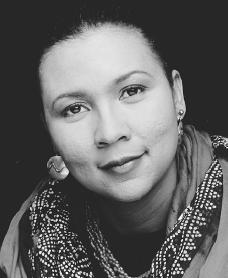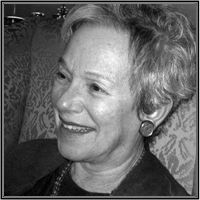Each week we feature a blog post by one of our many talented interns here at Superstition Review. This week’s piece comes from Fiction Editor Sarah Murray.
The Online Literary Magazine at Arizona State University
Each week we feature a blog post by one of our many talented interns here at Superstition Review. This week’s piece comes from Fiction Editor Sarah Murray.
The Story Prize, an annual award for books of short fiction, has recently released its 2011 award winners. Three outstanding short story collections were chosen from among a field of 92 books that 60 different publishers or imprints submitted in 2011. With so many worthy entries this year, The Story Prize included an additional list of seven outstanding contenders and 25 noteworthy mentions.
We would like to congratulate all of our SR contributors who made the list:
Issue 3 contributor Edith Pearlman‘s book Binocular Vision was one of the three award winners.
Of the seven finalists, SR has featured Steve Almond and Daniel Orozco in Issue 2.
Issue 2 contributor, Michael Martone from Issue 4.
Caitlin Horrocks, mentioned for her book, This Is Not Your City, will be featured in our upcoming release of Superstition Review Issue 9.
| ASU Polytechnic hosts TED2012 webcast Wednesday, February 29, 2012 9:30 a.m. – 7:45 p.m. Student Union, Cooley BallroomsASU’s Polytechnic campus will host a live webcast of TED2012 from 9:30 a.m. – 7:45 p.m., Feb 29. TEDx is hosted by Barrett, The Honors College at Polytechnic campus and will be held in the Cooley Ballrooms.Live speakers at ASU Polytechnic: Lee Gutkind: (11:15 a.m. – 12 p.m.) Dubbed by Vanity Fair as “the Godfather behind creative nonfiction,” Gutkind is an author and founder of Creative Nonfiction, the first and largest literary magazine to publish nonfiction exclusively. His latest book, “Almost Human: Making Robots Think” was featured on the Daily Show with John Stewart. Gutkind spent six years as a fly-on-the-wall researcher at the Robotics Institute at Carnegie Melon University in Pittsburgh where scientists and students are working to design, build and test robots so advanced that will work alongside humans. “Almost Human” is a portrait of robotic subculture. Gutkind is the Distinguished Writer-in-Residence in the Consortium for Science, Policy & Outcomes at ASU and a professor in the Hugh Downs School of Human Communication. Jennifer Gale: (1:45 – 3:15 p.m.) Gale is a local advocate for sustainability and co-founder of “Paper or Plastic? Neither One Please!” Her work addresses the volume of plastic disposables as a vital issue for the planet. Solutions Exhibition: (5 – 6 p.m.) Sponsored by Changemaker Central and the Programming and Activities Board, the Solutions Exhibition is a forum for students to showcase new ideas and learn how to transform ideas into reality. Attendees at TEDx may stay for the entire day’s schedule or drop by for a shorter time period throughout the day. Workstations will be set up, and attendees are welcome to work on laptops during the event. Admission is free; food will be served throughout the day. For more information, visit http://barrettpoly.asu.edu/2012/01/tedxbhcpoly/ or call (480) 727-5399. A list of speakers for TED event can be found here. |
There is something about the aroma of a worn book that induces a sense of nostalgia. Print aficionados have fought to maintain the sanctity of printed press, but as the popularity of eReaders and tablets continues to rise, how long can book-advocates withstand the pressures of a technology-driven society?
With Apple’s iPad, Amazon’s Kindle, and Barnes & Noble’s Nook leading the revolution, more and more readers are turning to the instant gratification of eBooks and digital readers over more traditional mediums. They can now hold entire libraries in their hands, buy a book with the tap of a finger, and read until their screens go dark. So what’s not to love?
Some argue the experience is not the same. A book’s battery never goes dead. Browsing an App Store can’t compete with wandering the shelves of a bookstore and running your fingers along the spines. Holding a book in your hands, with its binding and tangible pages, doesn’t feel the same as holding plastic, aluminum, or glass. Books are permanent entities whereas digital media feels ephemeral; an ebook you own could be there one day and gone the next, but a printed media will withstand decades. Actor and journalist Stephen Fry said recently, “Books are no more threatened by the Kindle than stairs by elevators.” Other authors would agree that while eBooks are convenient, they will never replace print.
However, some statistics show that the move towards eReaders is happening more aggressively. In a recent article, The Wall Street Journal estimated that one in six Americans now uses an eReader, a number that has nearly doubled since 2010. That statistic is estimated to more than triple in these next few years, which leads to the question, what will become of print?
The bright side to this new trend is that eReaders aren’t entirely replacing books in American households; many readers own both an eReader and a hearty bookshelf filled with volumes of print. According to the Wall Street Journal, amongst eReader users only 6% admit to not purchasing a single book in the past year, which is a much better percentage than the 32% of Americans who haven’t purchased a book at all in the past year. Perhaps the accessibility of books on an eReader increases not only book sales, but also reading and literacy rates.
Both book lovers and eReader advocates have strong feelings on the topic. It will be interesting to see what the future holds for both print books and their digital counterparts.
Each week here at Superstition Review, we like to showcase the talents of our interns. This week’s piece comes from Samantha Allen on her recent discussion with author bell hooks. 
Feminist writer and cultural critic bell hooks visited Arizona State University’s Tempe campus to speak about race and gender in a historical context. Earlier in the day some of our staff at Superstition Review were given the opportunity to participate in a small group discussion with bell. This discussion covered everything from the recent ban of ethnic studies in Tucson, to the novel The Help, to evangelist Billy Graham’s changing religious views. A prominent theme of our talks centered on the idea of community. “Communities,” she said, “are what give us the strength to live our convictions even in the face of hostility.”
As bell illustrated through stories from her personal life, these “communities of resistance” aren’t always free of conflict. She shared stories about the people in her life who have acted in ways that are harmful to her and to her views, all the while doing good by supporting her in her work, or by making great strides towards promoting racial equality. She called this contradiction “multiple intentionalities” – when people or groups do both harm and good. How do we cope with these contradictions? Do we ignore the good in someone’s actions because they have also done wrong? Do we overlook the unpleasant qualities so we can continue to idealize them as saints and angels? We live in a binary culture that has no place for contradictions. bell hooks used a story about a conflict in the humanities department at Berea College, where she teaches, to discuss how the inability to deal with multiple intentionalities can become an impediment to building communities of resistance. Even when the goals are the same, it’s easy to be divided by our differences.
This message of importance in building communities of resistance seemed to resonate deeply with everyone in the room. It’s no secret that Arizona has been the battleground for a number of contentious political issues in these past couple of years. The actions of our state legislature have given Arizona a particular reputation for intolerance, one that conflicts with the values of the Humanities Department at Arizona State University. The ASU Humanities department celebrates diversity and the commitment to social justice. The very act of getting together to discuss these issues with bell hooks is a step toward building a similar community here in the heart of Arizona. Although this state is mired in ideological conflict, it’s important to remember to act with loving-kindness, as bell pointed out in our discussion. No one is black and white; no one acts in only one direction. The concept of multiple intentionalities is particularly applicable to the current cultural climate in Arizona.
In the end, the discussion with bell hooks left me with this thought: as artists, writers, and readers, it is our job to tackle these contradictions in life. The human tendency to do good with the right hand and harm with the left is, perhaps, the very thing that drives us to create. How else can we make sense of ourselves and our world with all its contradictions if not through art? I’m thankful to be a part of the community here at Superstition Review, where our interns, contributors, and readers are all committed to the art that makes sense of our crazy, convoluted world.
 Edith Pearlman’s (Issue 3) collection of stories, Binocular Vision, has been nominated for the National Book Critics Circle fiction award. You can find more information and an interview with Edith Pearlman at Sycamore Review.
Edith Pearlman’s (Issue 3) collection of stories, Binocular Vision, has been nominated for the National Book Critics Circle fiction award. You can find more information and an interview with Edith Pearlman at Sycamore Review.
Congratulations Edith on this wonderful achievement.
Update: Edith Pearlman’s Binocular Vision has won the National Book Critics Circle fiction award.
If you want to be published in Superstition Review, there is still time. You can submit your nonfiction, poetry, fiction, or artwork via our website by February 29th.
Crazyhorse is opening its doors to writers and literary magazine enthusiasts alike for their Crazyhorse Writing Conference.
The conference will take place March 15-18 on the College of Charleston campus, located in the heart of South Carolina. It will feature artists, speakers, faculty members, and writers from all walks of life. Don’t miss this great opportunity to meet fellow writers and explore an internationally renowned literary publication.
You can find more information on how to sign up on the Crazyhorse Writing Conference website.
Issue 3 contributor, Mary Sojourner, is hosting the Spring Jumpstart: A Writing Circle at the Changing Hands Bookstore on March 1st, 6:30-8:30PM.
The Jumpstart Writing Circle is “for those,” says Mary, “who have always wanted to write and haven’t, for blocked writers, and for writers who want to move to the next level of their work.” The Jump Start Circle is not designed to be a lecture, but rather an interactive opportunity for participants to write and develop their writing. Each Jump Start Circle varies. The cost is $25 and those interested can register at 480.730.0205.